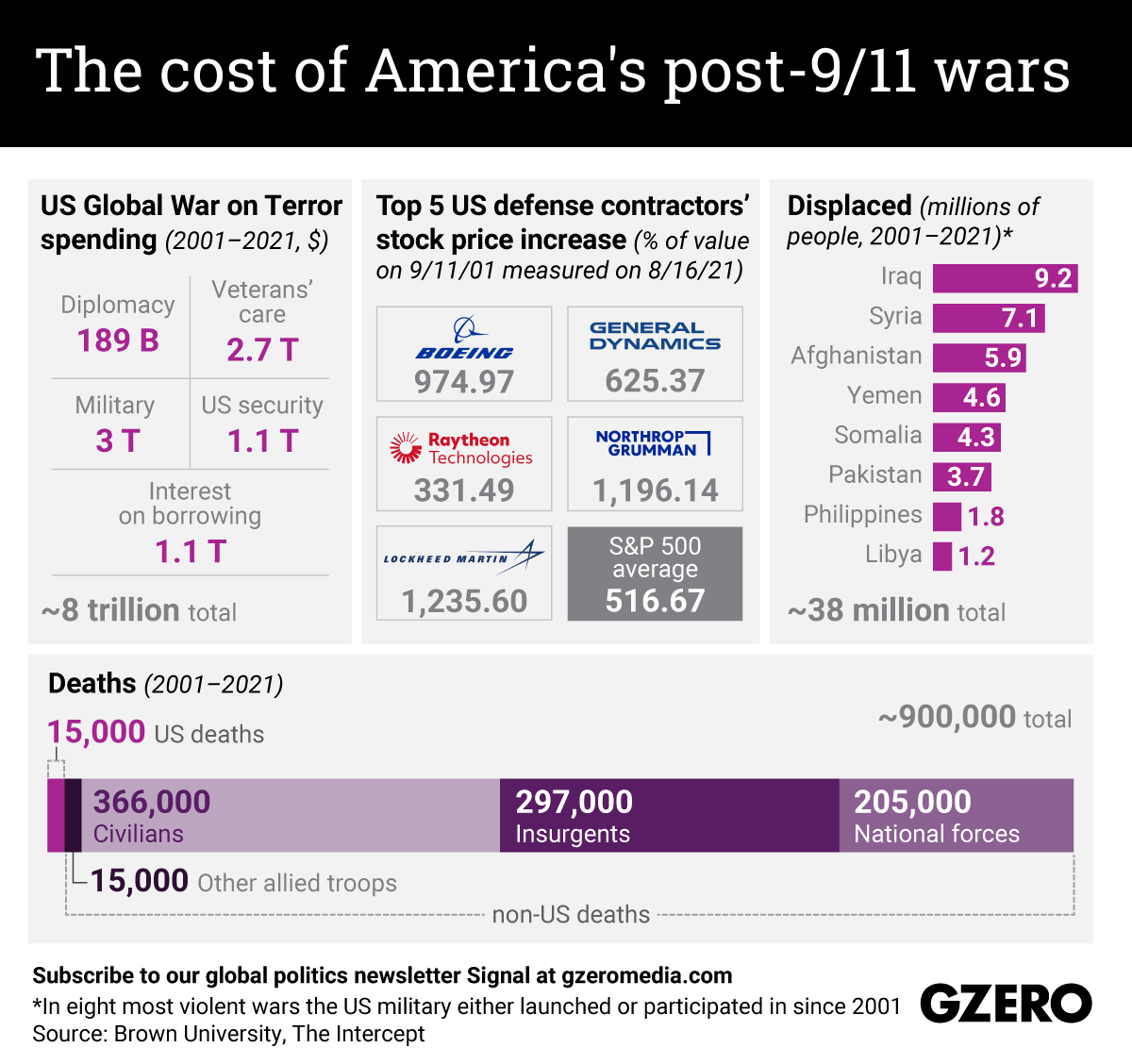September 08, 2021
In the two decades since 9/11, the US government has spent an astounding $8 trillion on the resulting Global War on Terror, which included invasions of Iraq and Afghanistan and more limited involvement in other conflicts around the Middle East and Asia. The human costs in affected countries are staggering: almost a million dead, and 38 million refugees or internally displaced people. Meanwhile, a select group of US-based arms companies benefited immensely — if you'd invested in them in 2001, you'd have seen a return twice as large as the average for blue-chip firms during that time frame. Here we take a look at US military spending, top US defense contractors' stock prices, death toll, and displaced people in the US-led Global War on Terror.
Editorial note: An earlier version of this graphic incorrectly listed the amount spent on US veterans' care and the breakdown of deaths in the Global War on Terror. We apologize for the errors.
From Your Site Articles
- Enter China, exit policeman: How the world has changed since 9/11 - GZERO Media ›
- Podcast: A safer America 20 years after 9/11? Michael Chertoff and Rory Stewart discuss - GZERO Media ›
- The cost of war: Senator Tammy Duckworth on what we owe veterans - GZERO Media ›
- Is America safer since 9/11? - GZERO Media ›
- US national security in the 20 years since 9/11 - GZERO Media ›
More For You
Global conflict was at a record high in 2025, will 2026 be more peaceful? Ian Bremmer talks with CNN’s Clarissa Ward and Comfort Ero of the International Crisis Group on the GZERO World Podcast.
Most Popular
Think you know what's going on around the world? Here's your chance to prove it.
Indian Prime Minister Narendra Modi isn’t necessarily known as the greatest friend of Muslim people, yet his own government is now seeking to build bridges with Afghanistan’s Islamist leaders, the Taliban.
French President Emmanuel Macron, German Chancellor Friedrich Merz, Ukrainian President Volodymyr Zelenskiy, U.S. Special Envoy Steve Witkoff and businessman Jared Kushner, along with NATO Secretary-General Mark Rutte and otherEuropean leaders, pose for a group photo at the Chancellery in Berlin, Germany, December 15, 2025.
Kay Nietfeld/Pool via REUTERS
The European Union just pulled off something that, a year ago, seemed politically impossible: it froze $247 billion in Russian central bank assets indefinitely, stripping the Kremlin of one of its most reliable pressure points.
© 2025 GZERO Media. All Rights Reserved | A Eurasia Group media company.
